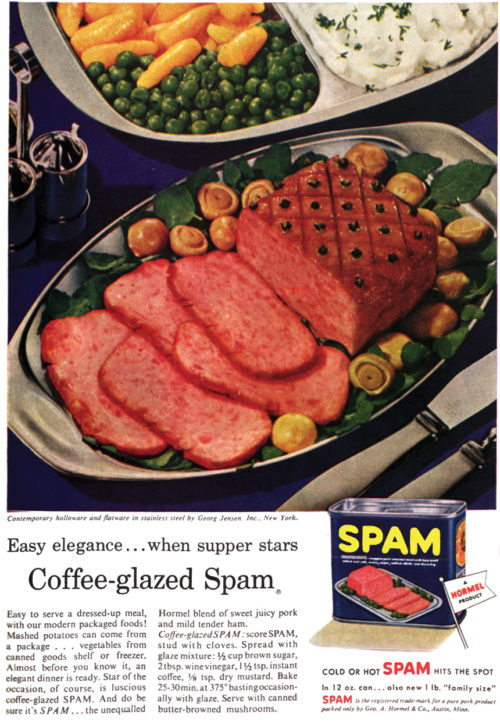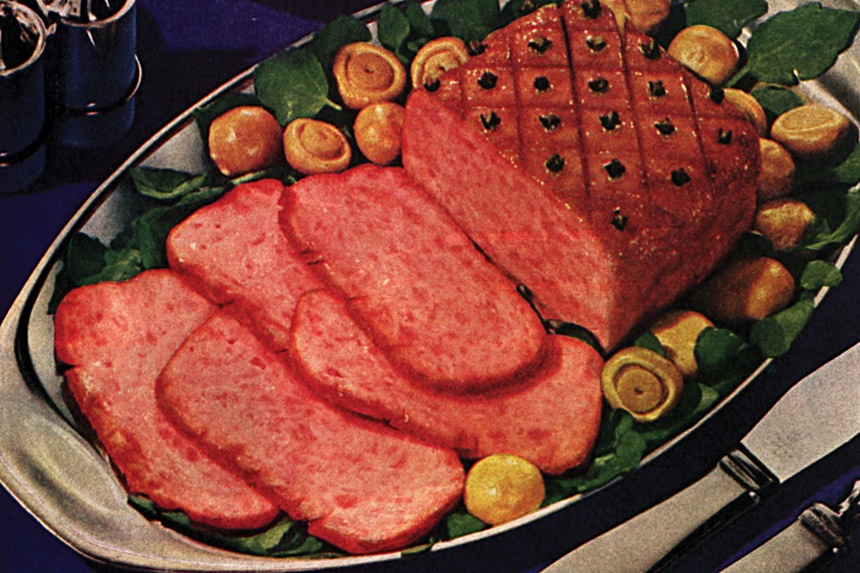When Jay Hormel introduced Spam in 1937, he’d never have believed it would play an important part in winning a world war. At the time, it was simply a way to sell previously discarded pork-shoulder meat. It was mixed with ham to create Spam, an inexpensive food that proved popular among Depression-era shoppers. By 1940, 70 percent of American households had tried what the Hormel Company called its “miracle meat.”
Then America entered the war, and the government realized the many benefits of Spam: It was nutritious, cheap, and easily transported; had a long shelf life; required no refrigeration; and could be eaten hot or cold — an ideal food for soldiers. Over the next four years, 150 million pounds of Spam were shipped to men and women in service. It became so common in GIs’ meals that some soldiers ate it three times a day, seven days a week.
Naturally, they grew tired of the monotony. They began referring to Spam sarcastically as “ham that didn’t pass its physical,” “meatloaf without basic training,” and “the reason war is hell.”
Back in the states, shortages and rationing often meant Spam was the only meat available to families, who also grew tired of it. But by 1957, when this ad appeared, Americans’ memories of Spam diets were fading, and Hormel was developing new ways to treat this old acquaintance.

This article is featured in the January/February 2019 issue of The Saturday Evening Post. Subscribe to the magazine for more art, inspiring stories, fiction, humor, and features from our archives.
Become a Saturday Evening Post member and enjoy unlimited access. Subscribe now



